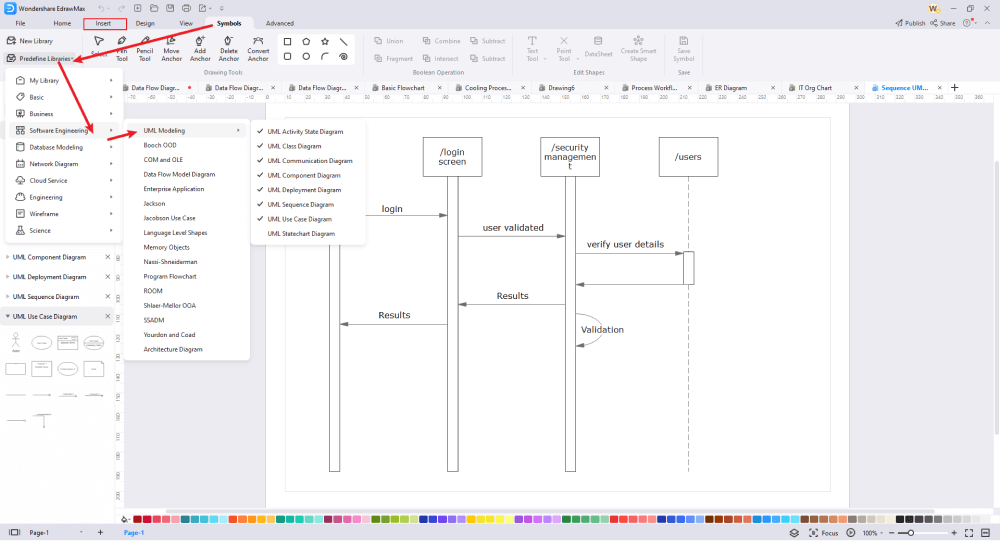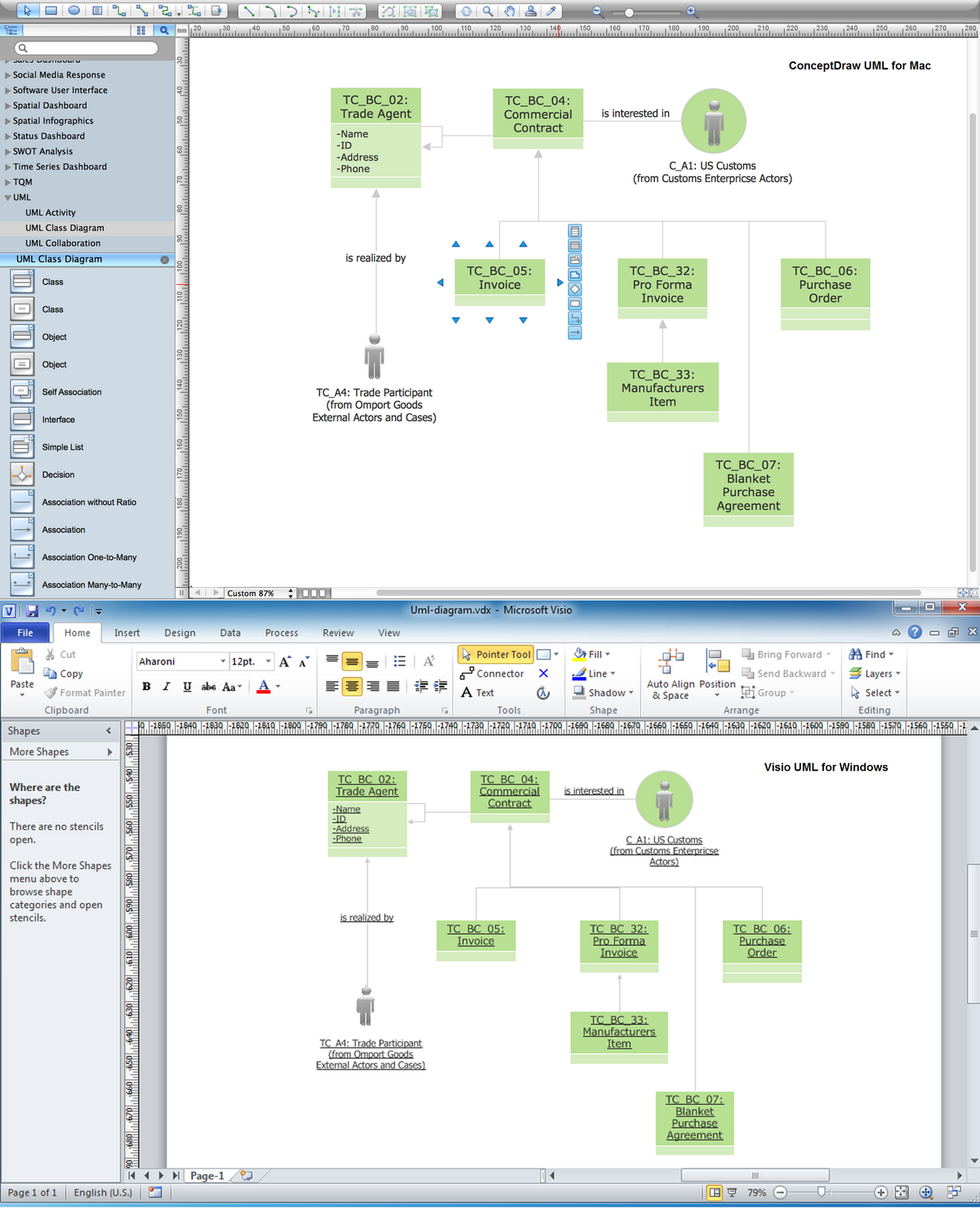

Visio does connecting and repositioning for you. If you have already created a diagram but you need to add or remove shapes, WhenĪuto Size is turned on and you drop a shape outside the current page, the pageĮxtends to accommodate the larger diagram. Surface with an expandable page that eases the creation of larger diagrams. The style you point to is applied temporarily soĪuto Size replaces the printer-paper-sized visible page in the Visio drawing Live Preview shows how formatting options, such as fonts and themes, will The Internet for shapes, click Find Shapes Online.
#VISIO SEQUENCE DIAGRAM TEMPLATE 2010 WINDOWS#
Your computer, so you must have Windows Search turned on to use it. Search for Shapes uses the Windows Search engine to find shapes on To open the Search box, click More Shapes, and then click Search for Shapes. Window, so you donât have to leave the Shapes window to open aīy default, the Search box is hidden to make more room for The More Shapes menu is now in the Shapes Shapes from all open stencils together in one place. If you have several stencils open and you know you only need a few shapesįrom each stencil, click the Quick Shapes tab to see the Quick In fact, you can rearrange the order of shapesĪnywhere in the stencil by dragging them where you want them. If you want to add or remove shapes, just drag the shapes you want into The new Quick Shapes area at the top of every stencil (above the faintĭividing line) is designed as a place for you to put the shapes you use most Click a title bar to see the shapes in that stencil. Title bars for all the open stencils are at the top of the The Shapes window shows all the stencils that are currently Shapes window update, including Quick Shapes

To get back to this area for saving yourįile, printing, publishing, setting Visio options, or other non-diagrammingĪctions, click the Microsoft Backstage Button. When you start a new diagram from any of the templates, this spaceĬloses and the drawing window opens. Many of the commands that used to be on the File menu are now The New windowĬontains the templates you use to start a diagram. In a new part of the Microsoft Office Fluent UI. When you start Visio, you are presented with the New window Themes, page setup, backgrounds, borders, titles, and more. For example, toĭesign and format your diagram, click the Design tab to find Other tabs have commands that are used for special purposes. The Home tab has a lot of the commands that are used most often, and May not have known about before are now easier to discover.Ĭommands are located on tabs, grouped by how they are used. Working instead of hiding them under menus or toolbars. The Ribbon keeps the most often-used commands visible while you're

Visio 2010 now has the Microsoft Office Fluent interface, including the It's Easier to Create Diagrams Office Fluent interface, including the Ribbon To help you get your bearings quickly, this articleĬovers the major improvements and changes. If you are used to working with Visio 2007, you will discover several newįeatures in Microsoft Visio 2010, and you will notice that some familiarįeatures have been updated. Some featuresĪre incomplete and are subject to change. What you can expect to see in the technical preview of Visio 2010. To move the text independently of the shape, go back to the Text Block Tool. If you use the Pointer Tool to drag the text, the shape will also move. When you’re done, click the Pointer Tool buttonĪfter you switch back to the Pointer Tool button, the text keeps the same position relative to the shape. On the Home tab, in the Tools group, click the Text Block toolĬlick the connector that has text your want to rotate or move.ĭrag the text block to move it, or rotate it using the Rotation Handle
#VISIO SEQUENCE DIAGRAM TEMPLATE 2010 HOW TO#
Here’s how to do that:Ĭlick an empty area of the page to deselect anything that may be selected. Most likely you’ll need to rotate or move text on your connector lines. If you anticipate moving shapes a lot, consider making a dynamic connection instead of a point connection. Make dynamic connections instead of point connections Right-click the connector, and then click Set Connector Type. For example, you can change from an Association to a Directed Association. If a connector is taking too many turns, right-click it, and then click Straight Connector.


 0 kommentar(er)
0 kommentar(er)
